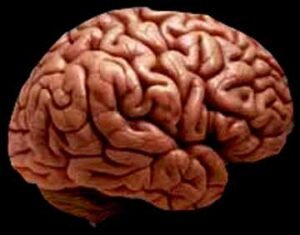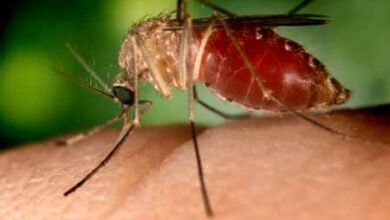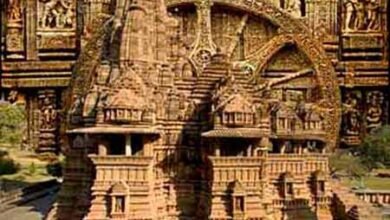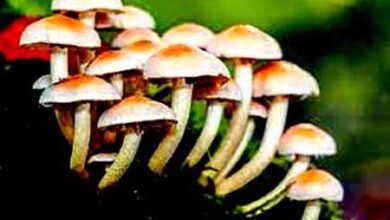
 1. वयस्क पुरुष के लिए सामान्य हीमोग्लोबिन मात्रा प्रति 100 ml रक्त कितनी होती है? = 14 से 18 ग्राम/डी एल. 2. मनुष्य की लाल रक्त कोशिकाओं का जीवनकाल कितना होता है? = 120 दिन. 3. मनुष्य के जीवन काल में कितने दाँत दो बार विकसित होते हैं? = 20 दाँत. 4. मनुष्य के मस्तिष्क का सबसे बड़ा भाग कौन-सा है? = प्रमस्तिष्क. 5. सेरेब्रम किससे सम्बन्धित होती है? = मस्तिष्क. 6. मानव का मस्तिष्क लगभग कितने ग्राम का होता है? = 1350 ग्राम. 7. मनुष्य में पाचन क्रिया कहाँ प्रारम्भ होती है? = मुख. 8. लार किसके पाचन में सहायक होती है? = स्टार्च. 9. लार में कौन-सा एन्जाइम पाया जाता है? = टायलिन. 10. पेप्सिन प्रोटीन को किसमें बदल देता है? = छोटे-छोटे पेप्टाइडस. 11. पाचन क्रिया में प्रोटीन किस पदार्थ में बदल जाते हैं? = एमीनो अम्ल. 12. पेट में भोजन को पचाने के लिए किसकी खास आवश्यकता होती है? = एन्जाइम 13. मानव शरीर में पाचन का अधिकांश भाग किस अंग में संपन्न होता है? = छोटी आँत. 14. मानव शरीर की सबसे छोटी ग्रन्थि होती है? = पिनियल ग्लैंड. 15. मानव के शरीर के किस भाग में शुक्राणु डिम्ब को निषेचित (Fertilize)करता है? = डिम्बवाहिनी नली (फैलोपियन टयूब). 16. मानव त्वचा को रंग देने वाला वर्णक होता है? = मेलानिन. 17. मानव रुधिर का pH क्या है? = 7.4 18. मानव रुधिर में कोलेस्ट्रॉल का सामान्य स्तर क्या होता है? = 140–180 mg /dL. 19. मानव शरीर का सबसे बड़ा अंग है? = त्वचा. 20. मानव शरीर की किस ग्रन्थि को ‘मास्टर ग्रन्थि’ कहा जाता है? = पीयूष. 21. मानव शरीर के भीतर खून किसकी उपस्थिति के कारण नहीं जमता है? = हिपेरिन. 22. मानव शरीर में खून के शुद्धिकरण की प्रक्रिया को कहते हैं? = डायलिसिस. 23. मानव शरीर में पैरों की हड्डियां कौन सी होती हैं? = फिबुला एवं टिबिया. 24. मानव शरीर में सबसे छोटी अन्त:स्त्रावी ग्रंन्थि है? = पिनियल ग्रंथी. 25. मानव शरीर में सबसे लम्बी अस्थि होती है? = उरु अस्थि (Femur bone). 26. मानव शरीर में हृदय का क्या कार्य होता है? = पम्पिंग स्टेशन. 27. मानव शरीर में पुच्छ कौन सी संरचना में संलग्न होता है? = सैक्रम के नीचे, स्पाइन के निचले भाग से. 28. रक्त में लाल रंग किसके कारण होता है? = हीमोग्लोबिन. 29. मूत्र का पीला रंग किसकी मौजूदगी के कारण होता है? = यूरोक्रोम. 30. रक्त का शुद्धिकरण कहाँ होता है? = किडनी. डॉ. (प्रो.) अमरेंद्र कुमार. ========== ========= =========== Human body…
 1. What is the normal hemoglobin concentration per 100 ml of blood for an adult male? = 14 to 18 g/dl. 2. What is the lifespan of human red blood cells? = 120 days. 3. How many teeth develop twice in a human’s lifetime? = 20 teeth. 4. Which is the largest part of the human brain? = cerebrum. 5. What is the cerebrum related to? = brain. 6. Approximately how many grams does the human brain weigh? =1350 grams. 7. Where does the digestion process begin in humans? = Mouth. 8. Saliva helps in whose digestion? = Starches in our food. 9. Which enzyme is found in saliva? =Ptylin. 10. What does pepsin convert proteins into? = Smaller peptides. 11. Into which substance are proteins converted during digestion? = Amino acids. 12. What is required specifically for digesting food in the stomach? = Enzyme 13. In which organ does most of the digestion take place in the human body? = Small intestine. 14. The smallest gland in the human body is? = Pineal gland. 15. In which part of the human body does the sperm fertilize the egg? = Fallopian tube. 16. The pigment that gives color to human skin is? = Melanin. 17. What is the pH of human blood? = 7.4 18. What is the normal level of cholesterol in human blood? = 140–180 mg/dL. 19. What is the largest organ of the human body? = Skin. 20. Which gland of the human body is called ‘master gland’? = Pituitary gland. 21. Blood does not coagulate within the human body due to the presence of? = Heparin. 22. What is the process of purification of blood in the human body called? = Dialysis. 23. What are the bones of the legs in the human body? =Tibia and the smaller fibula, at the lower leg. 24. The smallest endocrine gland in the human body is? = Pineal gland. 25. The longest bone in the human body is? = Femur (Thigh bone). 26. What is the function of heart in human body? = Pumping station. 27. In which structure is the tail attached in the human body? = Lower part of the spine below the sacrum. 28. What causes red color in blood? = Hemoglobin. 29. Yellow color of urine is due to the presence of? = Urochrome. 30. Where does blood purification take place? = kidney. Dr. (Pro.) Amrendra Kumar.
|






